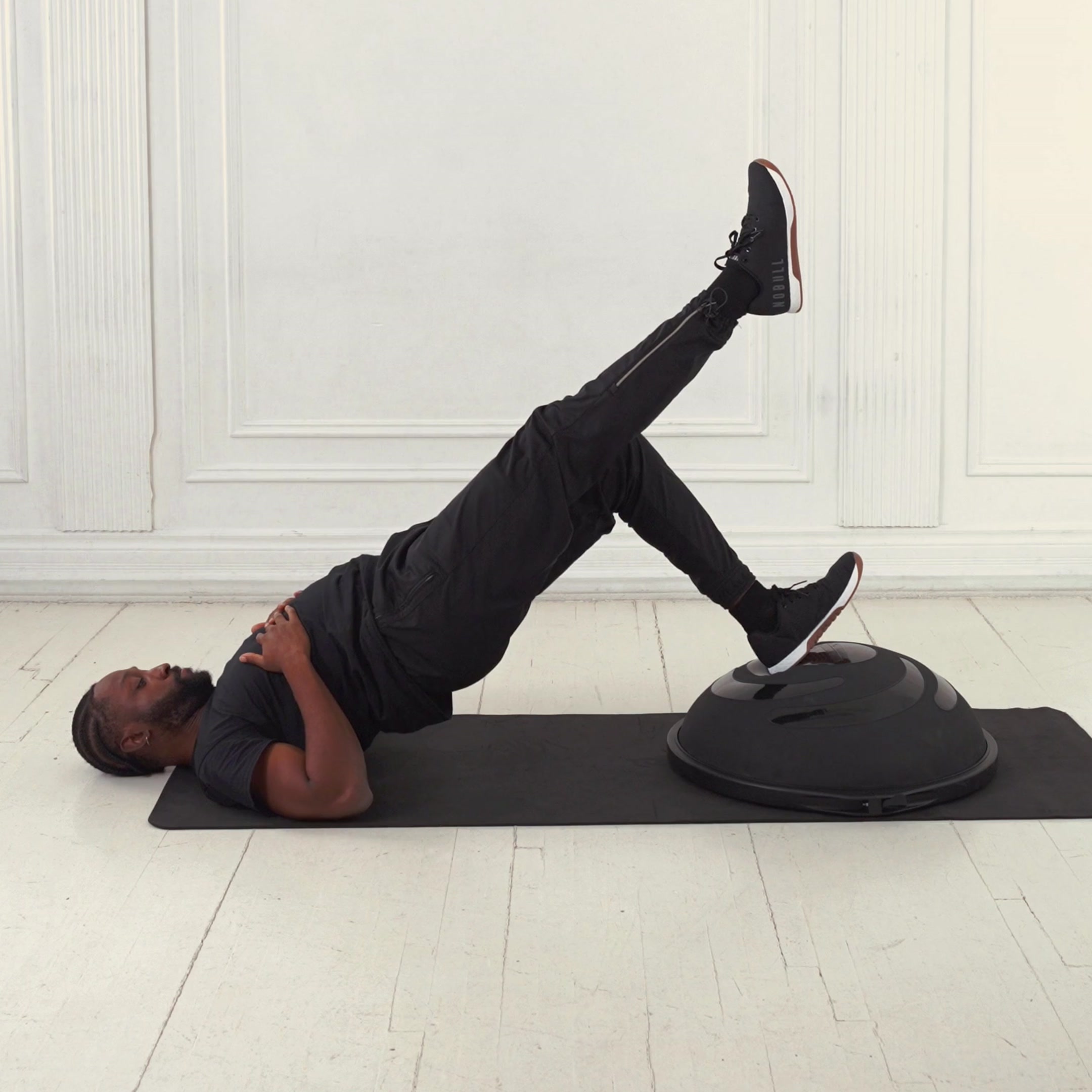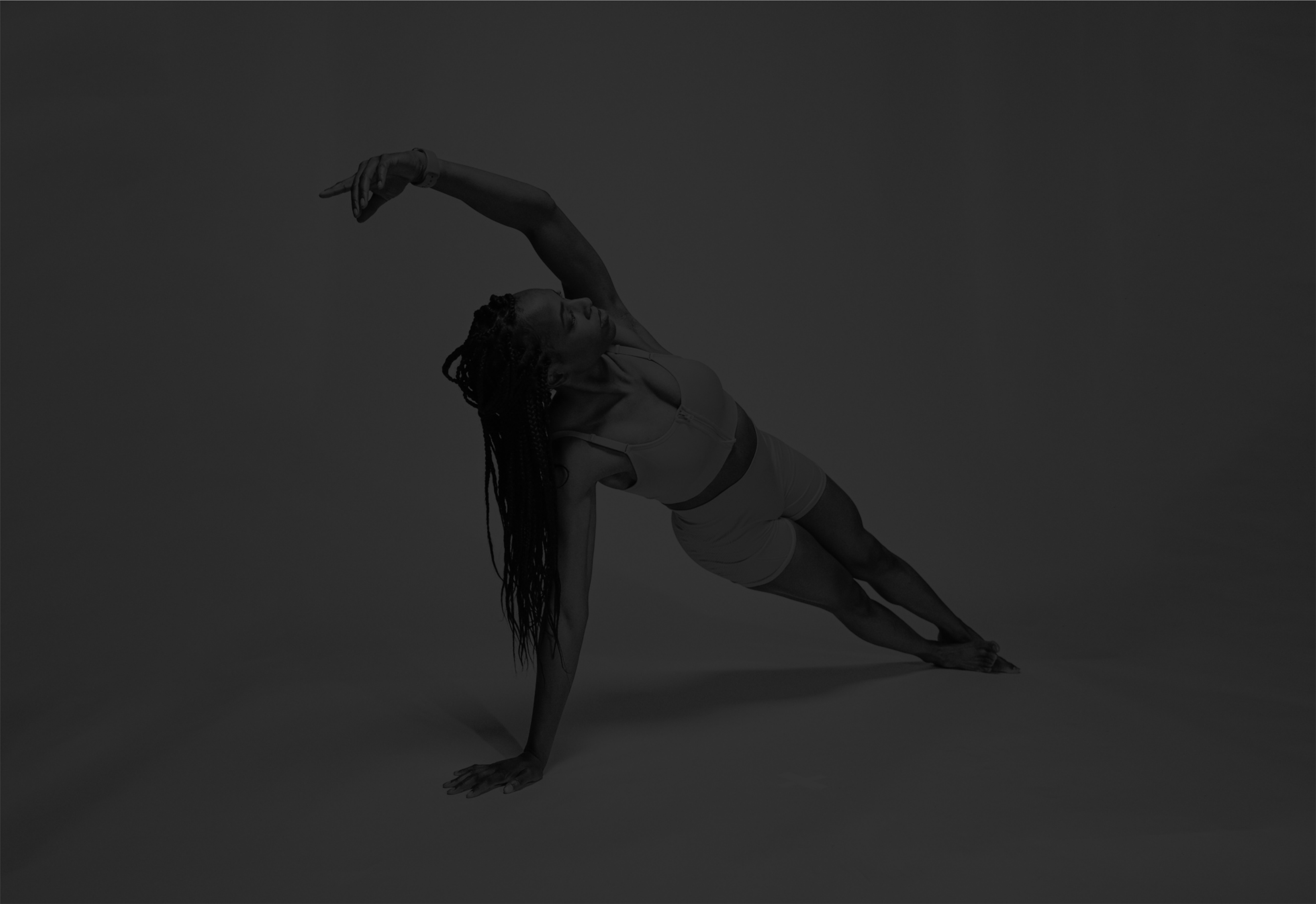Balance Trainer Hip Thrust
An unstable hip thrust variation using a balance trainer that targets glutes for strength and hypertrophy while enhancing core stability and balance; scale by adding weight or single-leg.
About Exercise
Equipment
Balance Trainer
Difficulty
4/5 • Intermediate
Primary Muscle Groups
Glutes
Secondary Muscles
Lower Back, Abs, Obliques
Popularity Score
5
Goals
Training Style
Setup Requirements
Requires Rack
No
Requires Bench
No
Requires Spotter
No
Space Needed
Small
Noise Level
Low
Muscle Breakdown
View Muscle MapGlutes
10/10Glute Max, Glute Medius
Hamstrings
7/10Biceps Femoris, Semitendinosus
Lower Back
5/10Erector Spinae
Abs
4/10Rectus Abdominis
Obliques
4/10External Obliques
Programming
Typical Rep Range
8-15 reps
Rest Between Sets
60-90 seconds
How to Perform
Place the balance trainer dome-up on the floor. Sit in front with upper back against the dome, feet flat hip-width apart, knees bent.
- Engage core and tuck chin.
- Drive hips up through heels, squeezing glutes.
- Extend hips until body forms straight line from shoulders to knees.
- Pause briefly at top, maintaining neutral spine.
- Lower hips slowly toward floor without resting.
- Repeat for reps, keeping control.
Coaching Tips
Form Cues
- Squeeze glutes hard
- Push through heels
- Neutral spine always
- Core tight
- Chin tucked
Breathing
Inhale as you lower hips, exhale forcefully as you drive up, bracing core throughout.
Tempo
3-1-2
Range of Motion
Lower hips until near floor, extend fully so shoulders, hips, and knees align.
Safety
Safety Notes
- Avoid if acute lower back pain
- Start bodyweight only
- Engage core to protect spine
- Controlled speed prevents falls
Spotting
No spotting needed; use self-supported setup or wall for balance assist.
Common Mistakes
- Hyperextending lower back
- Using momentum
- Feet too close to body
- Poor balance causing wobble
When to Avoid
- Acute lower back injury
- Severe balance impairment
- Hip instability
Flexibility Needed
- Adequate hip extension range
- Core stability for neutral spine
Build Up First
- Master basic hip thrust form
- Familiarity with unstable surfaces
Also known as
Bosu Ball Hip Thrust, Stability Ball Hip Thrust, Unstable Hip Thrust
Found this helpful?
Share your thoughts or help us improve this guide.
Similar Exercises

Balance Trainer Single-Leg Hip Thruster
Balance Trainer, Flat Bench
Glutes

Balance Trainer Half Burpee
Balance Trainer
Quads, Glutes

Balance Trainer Curtsy Lunge
Balance Trainer
Quads, Glutes

Balance Trainer Glute Bridge
Balance Trainer
Glutes
Balance Trainer High Knees
Balance Trainer
Hip Flexors, Quads

Balance Trainer Squat
Balance Trainer
Quads

Balance Trainer Reverse Lunge
Balance Trainer
Glutes, Hamstrings

Balance Trainer Burpee
Balance Trainer
Quads

Balance Trainer Step-Up
Balance Trainer
Quads

Balance Trainer Bird Dog
Balance Trainer
Abs


subscribe to our newsletter
Contact Us
hello@trainfitness.aiFind Us
130 Spadina Avenue, Toronto,
Ontario, M5V 0H4, Canada
©2025 All Rights Reserved
